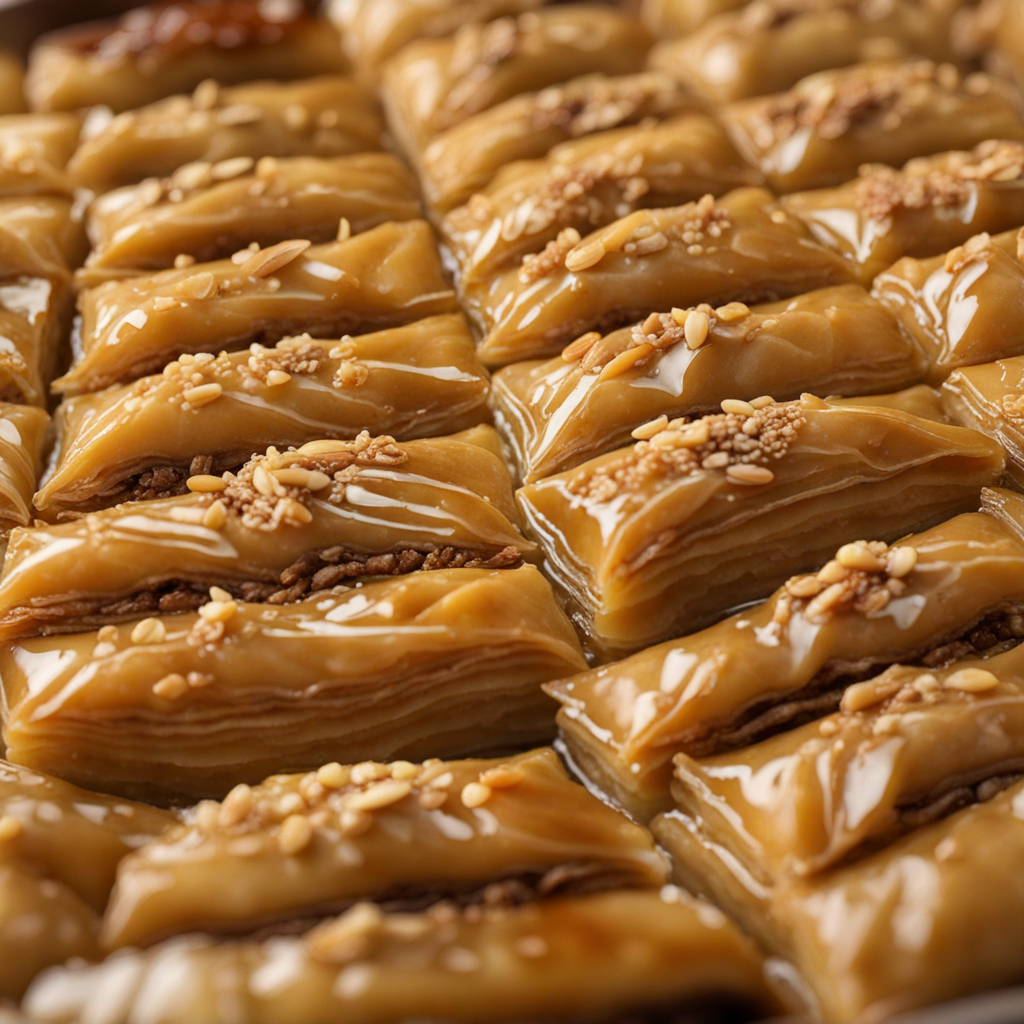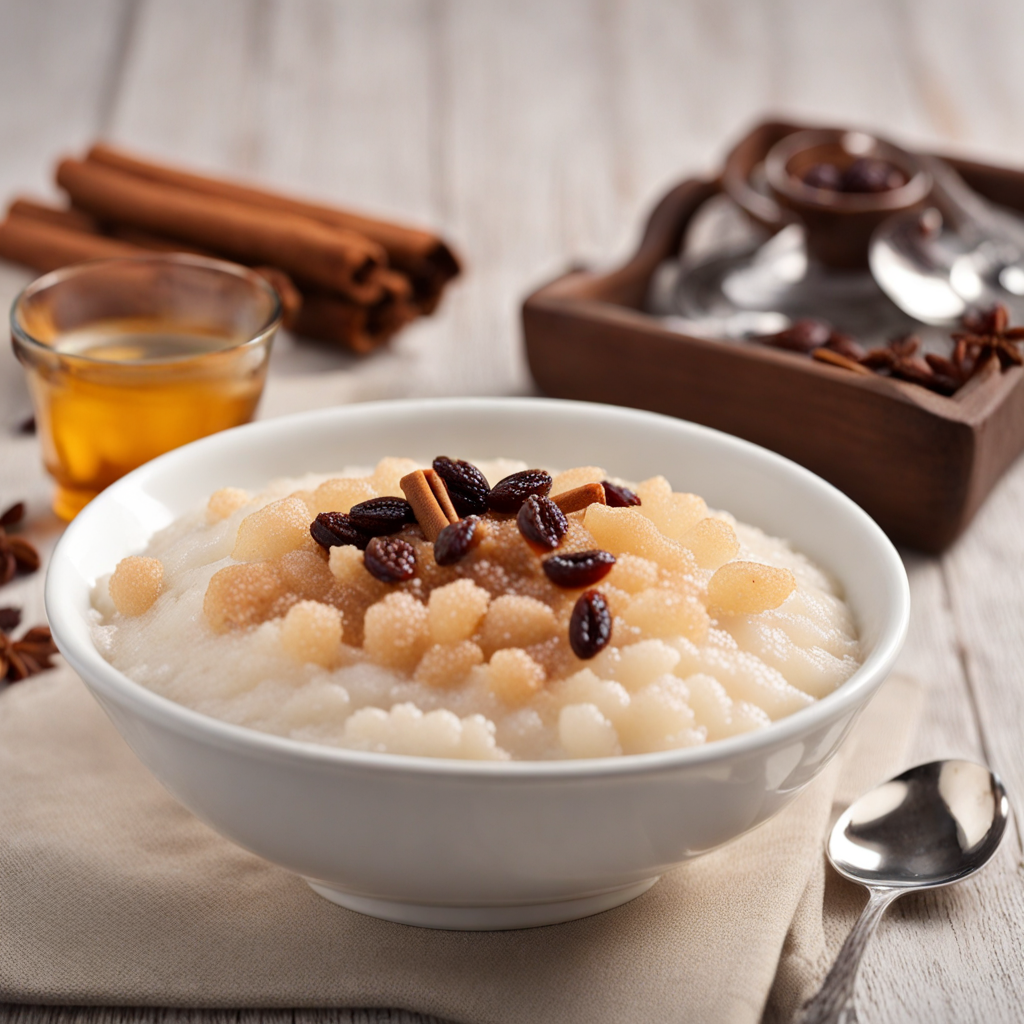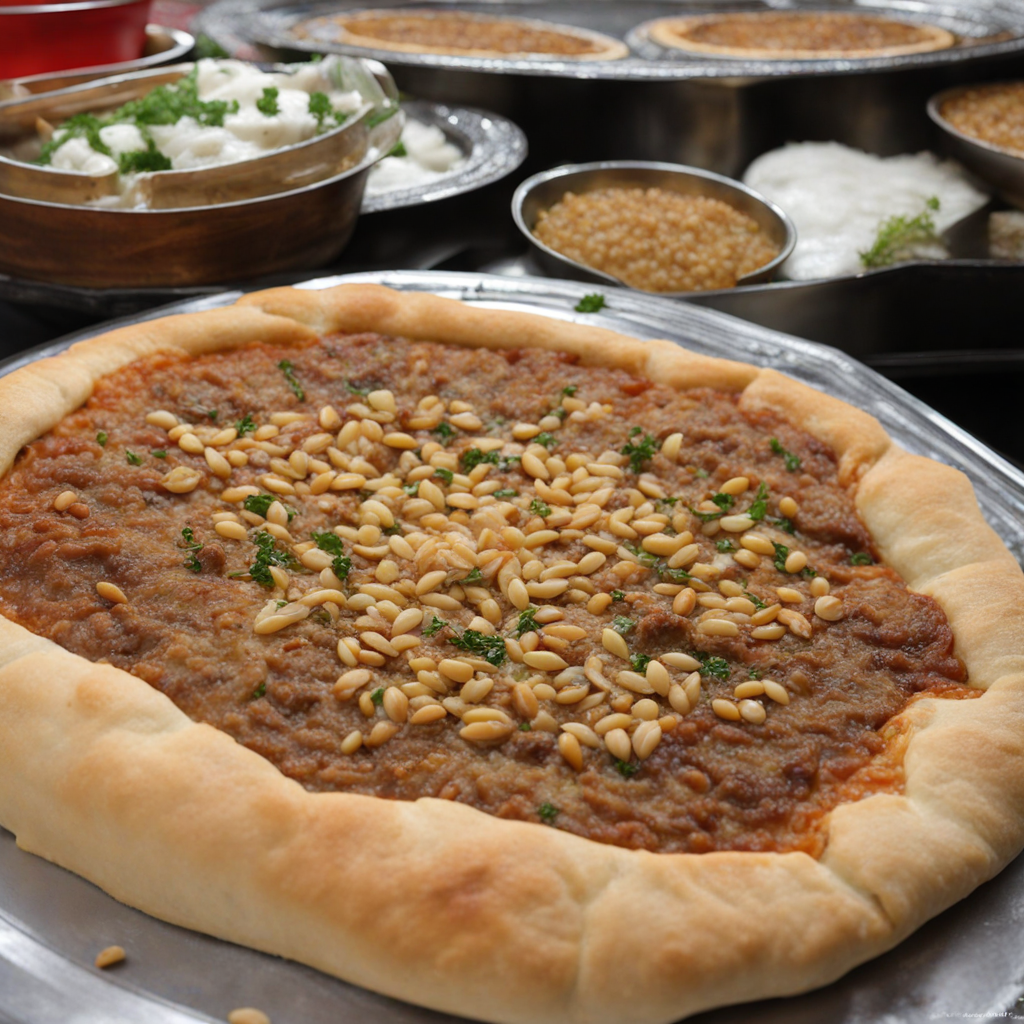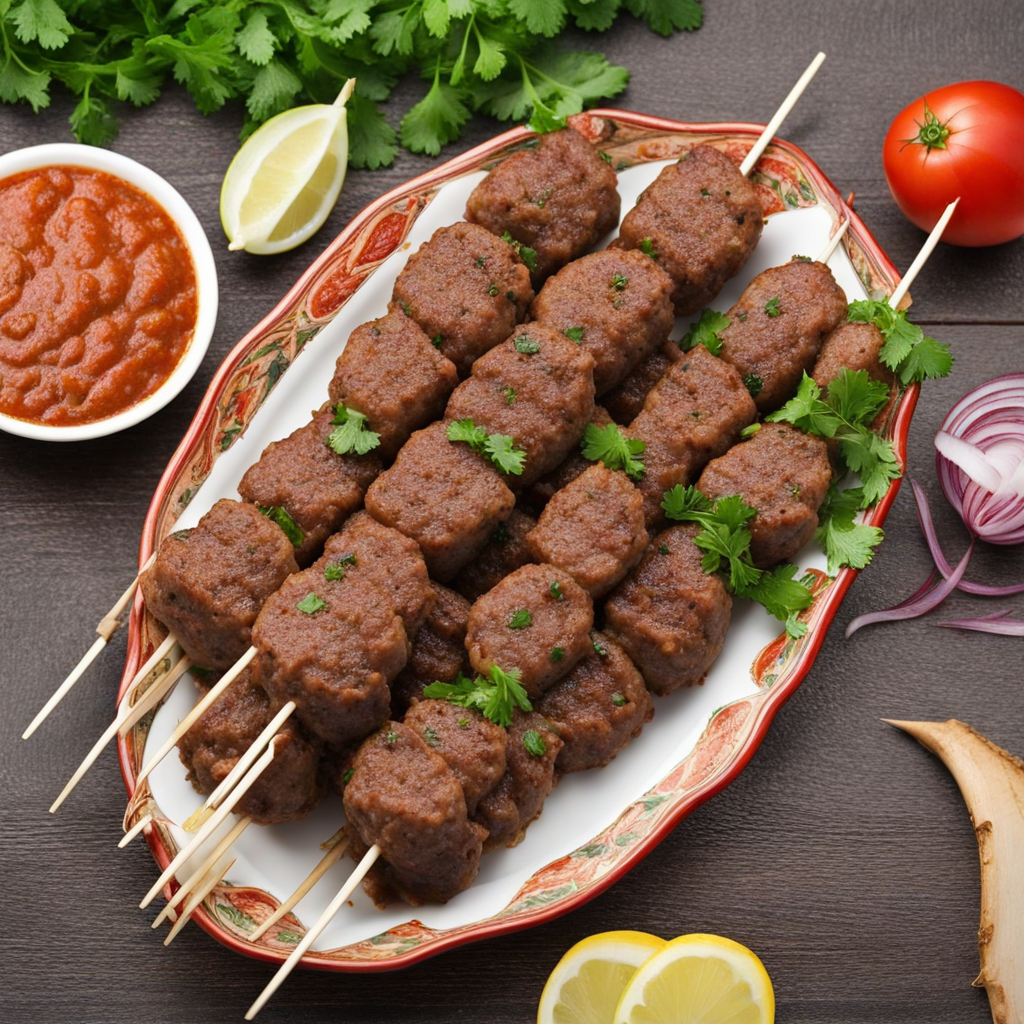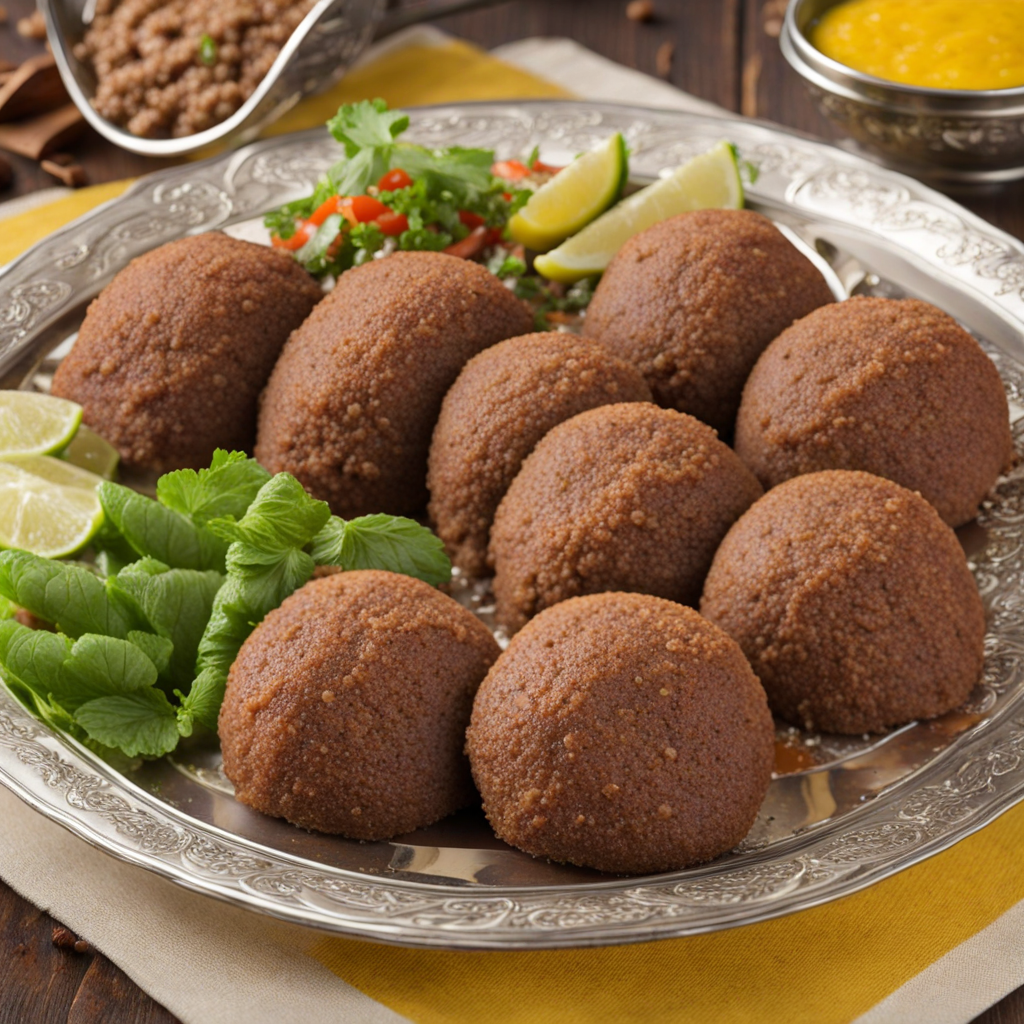Baklava
Baklava, known as "بقلاوة" in Arabic, is a rich, sweet pastry that has become emblematic of Lebanese cuisine, although its origins can be traced back to various cultures across the Middle East and the Mediterranean. The history of baklava is steeped in antiquity, with roots that are believed to stretch back to the Byzantine Empire. It has evolved over centuries, influenced by the diverse culinary traditions of the region, including the Ottomans and various Arab cultures, which have each added their unique touch to this beloved dessert. The hallmark of baklava is its intricate layering of thin pastry sheets known as phyllo (or filo) dough, which are delicately brushed with melted butter or ghee. This creates a crisp texture that contrasts beautifully with the rich filling inside. The layers, often numbering in the dozens, are typically filled with a mixture of finely chopped nuts such as pistachios, walnuts, or almonds, combined with sugar and aromatic spices like cinnamon. The balance of flavors is a defining characteristic of baklava, where the nutty richness is complemented by the sweetness of the syrup. Preparation of baklava is a meticulous process that requires both skill and patience. To make it, the phyllo dough is rolled out into thin sheets, which can be quite delicate and require careful handling. A typical recipe begins with layering several sheets of phyllo in a buttered baking pan, followed by a generous sprinkling of the nut mixture. More layers of phyll
How It Became This Dish
Origins of Baklava The delicious pastry known as بقلاوة (baklava) has a history that stretches back centuries, reflecting a rich tapestry of cultural influences. While the exact origins of baklava are debated, many food historians suggest that it can trace its roots to the ancient Assyrians around 800 B.C. They layered thin bread dough with nuts and honey, creating a precursor to the baklava we know today. As the centuries progressed, this dish traveled through various civilizations, influencing and being influenced by the culinary practices of each. The most significant development of baklava occurred during the Ottoman Empire, which spanned from the late 13th century until the early 20th century. The Ottoman Turks refined the dish, perfecting its preparation and presentation. The use of phyllo dough, thin layers of pastry that create a flaky texture, became a hallmark of the baklava we recognize today. The pastry was often filled with a mixture of nuts, such as walnuts, pistachios, and almonds, then sweetened with syrup made from honey and sugar. This indulgent dessert was not just a treat; it was a symbol of hospitality and luxury. Cultural Significance in Lebanon In Lebanon, baklava holds a special place in the culinary landscape and is emblematic of the nation’s rich cultural heritage. The dessert is commonly associated with celebrations, weddings, and religious holidays, such as Ramadan and Eid. During these occasions, families come together to prepare this intricate pastry, passing down recipes and techniques from one generation to the next. The act of making baklava is often as important as consuming it, fostering a sense of community and tradition. Lebanese baklava is distinct in its preparation and flavor compared to variations found in other countries. While the basic components remain consistent, Lebanese baklava often includes a variety of spices, such as cinnamon and clove, which infuse the pastry with an aromatic warmth. The addition of rose water or orange blossom water creates a unique fragrance that sets it apart from its regional counterparts. This aromatic touch is a testament to the Lebanese emphasis on flavor and sensory experience in their cuisine. Regional Variations and Techniques As baklava spread across the Middle East and beyond, it adapted to local tastes and ingredients, leading to a multitude of regional variations. In Turkey, for example, baklava is often prepared with a thicker layer of dough and may include a heavier emphasis on pistachios. Conversely, in Greece, the use of honey and the addition of spices create a different flavor profile altogether. Each variation tells a story of the region’s culinary traditions and preferences, yet all share the underlying theme of indulgence and celebration. In Lebanon, the preparation of baklava is considered an art form. The process begins with the meticulous layering of phyllo dough, which is often brushed with melted butter or ghee to achieve a rich, golden color. The filling, usually a finely chopped mix of nuts, is evenly distributed between the layers. Once assembled, the pastry is cut into diamond or square shapes before being baked to perfection. The final touch involves pouring a sweet syrup over the hot baklava, allowing it to absorb the sweetness while maintaining its crisp texture. This careful balance between crunchiness and syrupy sweetness is what makes Lebanese baklava particularly cherished. Baklava in Contemporary Lebanon Today, baklava remains a staple in Lebanese cuisine and can be found in bakeries and homes alike. The pastry has transcended its role as a festive treat; it is now enjoyed year-round, often accompanied by a cup of strong Arabic coffee or tea. Bakeries specializing in traditional sweets, such as Al Nakhle and Abdul Rahman, have become popular destinations for both locals and tourists seeking authentic Lebanese baklava. These establishments often offer various styles and flavors, showcasing the creativity of modern pastry chefs while honoring traditional techniques. Lebanese baklava has also gained international recognition, becoming a symbol of Middle Eastern cuisine in global culinary scenes. Food festivals and cultural events often feature baklava, introducing new audiences to its rich flavors and textures. As Lebanese expatriates travel the world, they carry with them the recipes and traditions associated with baklava, ensuring that this beloved dessert continues to thrive in diverse settings. Baklava and Identity Baklava, in many ways, encapsulates the essence of Lebanese identity. It represents resilience, tradition, and the ability to adapt and thrive amidst changing circumstances. The act of sharing baklava is a gesture of love and hospitality, reflecting the values deeply ingrained in Lebanese culture. It is not merely a dessert; it is a connection to heritage and a celebration of community. As Lebanon continues to navigate the complexities of modern life, baklava remains a comforting reminder of the past. The pastry's intricate layers symbolize the rich history of the Lebanese people, marked by cultural exchange and culinary innovation. Whether enjoyed at a family gathering or a public celebration, baklava serves as a delicious link between generations, bridging the gap between tradition and contemporary life. The Future of Baklava As we look to the future, the legacy of baklava is poised to evolve further. With increasing interest in global cuisines, modern chefs are experimenting with new ingredients and presentations, breathing fresh life into this timeless dish. Vegan and gluten-free versions are emerging, catering to contemporary dietary preferences while still respecting the essence of baklava. The enduring appeal of baklava lies in its ability to unite people, transcending borders and cultures. From the bustling streets of Beirut to the cafés of Paris, this delectable pastry continues to enchant palates and evoke nostalgia. As it adapts to new contexts, baklava remains a delicious testament to the rich culinary heritage of Lebanon, inviting all to partake in its sweet, layered history.
You may like
Discover local flavors from Lebanon


